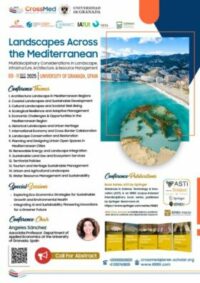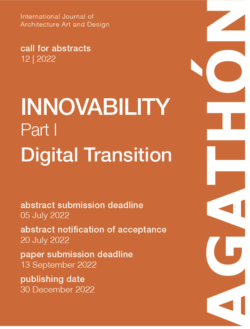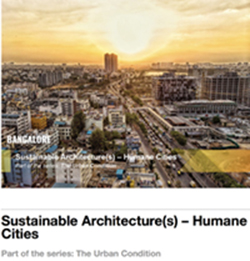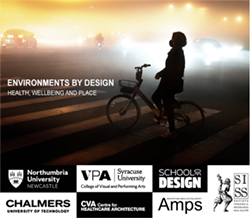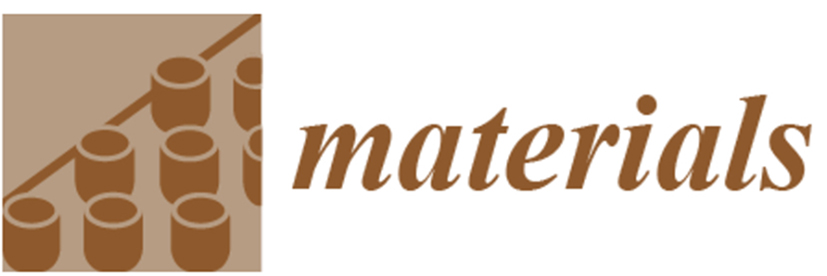ISSN (online): 1996-1944
Call of the Journal:
- Advanced Carbon Materials in Water Treatment or Separations Technology
- Advanced Functional Hybrid Materials for Novel Biomolecular Electronics
- Advances in Biomaterials | Design, Synthesis, Characterisation and Biomedical Application
- Advances in Construction and Building Materials
- Advances in Green Construction Materials
- Assessment of Metallurgical and Mechanical Properties of Welded Joints via Numerical Simulation and Experiments
- Carbon Compounds-Reinforced Ceramics
- Concrete and Waterproofing Materials | Development of Waterproofing Technology for Buildings and Civil Concrete Structures
- Corrosion Inhibitors for Steel | Experimental and Theoretical Studies
- Damage and Failure of Polymers, Polymer-Like Materials, Adhesives and Polymer Nanocomposites
- Development of Energy Storage or Conversion Element Based on Various Nano Materials
- Dyes | Synthesis, Properties, and Applications
- Dynamic Behavior of Ceramic Composites
- Flexible Sensors and Actuators for Novel Wearable Solutions
- Fundamentals and Applications of Bionano Sensor Techniques
- Graphene Foam Based Composites
- Growth and Application of Foam-Based Materials
- High Performance Concrete
- Hybrid Noble Metal/Graphene Aerogels | Synthesis, Characterization and Applications for Chemical Sensing and Biosensing
- Hydrogen Storage and Fuel Cells | Materials, Characterization and Applications
- Load Test and Numerical Analysis on Construction Materials
- Machining and Surface Properties of Steel Parts
- Materials under Extreme Conditions | Technologies for CRMs Reduction, Substitution and Recovery
- Microplastics and Nanoplastics | From Resource to Pollution
- Mineral-Bonded Composites for Enhanced Structural Impact Safety
- Modification and Processing of Biodegradable Polymers
- Nanostructured Semiconductors for Photoinduced Applications
- Novel Inorganic Adsorbents for Environmental Purification
- Numerical Simulation and Experimental Studies of Wave Phenomena in Composite Materials
- Performance Research of Polyurethane Foams and Composites
- Physics, Electrical and Structural Properties of Dielectric Layers
- Precision and Ultra-Precision Subtractive and Additive Manufacturing Processes of Alloys and Steels
- Processing and Thermal Properties of Hybrid Composites
- Recent Advances in 3D Printing for Biomaterials
- Recent Progress in the Development, Material Properties, and Post-Processing of Additively Manufactured Components
- Silica and Silica-based Materials for Biotechnology, Polymer Composites and Environmental Protection
- Study on the Modification and Compressive Properties of Concrete Buildings Materials
- Superconductors for Opto-Nano and Micro-Electro-Mechanical Systems (O-N/MEMS)
- Synthesis and Characterization of Hybrid Nanomaterials and Nanocomposites
- Synthesis, Properties and Applications of Polymer Blends
- Testing of Materials and Elements in Civil Engineering
- The Science and Technology of 3D Printing
Feb
2021
Dec
2021
Most of the important achievements in architecture during the twentieth century, some of which are now on the World Heritage List, were constructed in reinforced concrete, an artificial material which was expected to maintain the required mechanical properties over the expected lifetime of the structure. However, many decades after their construction under specific environmental conditions, these buildings are now facing a series of preservation challenges as they experience various forms of modification, including deterioration of mechanical concrete properties. Meanwhile, researchers from all over the world are focusing their efforts on material modification in order to improve the properties of both fresh and hardened concrete, to study the effects of different types of mineral admixtures and additives, of fiber-reinforcing, w/c ratio, green concrete, and phase change recycled concrete for use in thermal conditioning. In this context, the compressive properties of concrete building materials are usually evaluated to assess the quality of concrete in its different material composition and application, in order to satisfy the structural design purposes responding to the current needs and to guarantee the future ones. The articles published in this Special Issue will cover different topics on concrete modification and performance, ranging from numerical to experimental studies that includes both fieldwork and laboratory research to evaluate the compressive properties of concrete both in its current form and in cases where it has been retrofitted or upgraded. The issue includes papers on monitoring and nondestructive testing methods, aiming to control material modifications during its service life in order to ensure safety, durability, and functionality, as well as sustainability of the concrete buildings. Finally, papers on matters of safety, uncertainty, preservation, and decision on whether to modify the existing condition or not are welcome.
Keywords: High and ultrahigh performance concrete; Fiber-reinforced concrete; Green concrete; Phase change recycled concrete; Durability; Sustainability; Nondestructive testing (NDT) of concrete structures; Onsite inspection; Structural health monitoring; Design by testing; Material uncertainties; Predictive maintenance.
Study on the Modification and Compressive Properties of Concrete Buildings Materials
Most of the important achievements in architecture during the twentieth century, some of which are now on the World Heritage List, were constructed in reinforced concrete, an artificial material which was expected to maintain the required mechanical properties over the expected lifetime of the structure. However, many decades after their construction under specific environmental conditions, these buildings are now facing a series of preservation challenges as they experience various forms of modification, including deterioration of mechanical concrete properties. Meanwhile, researchers from all over the world are focusing their efforts on material modification in order to improve the properties of both fresh and hardened concrete, to study the effects of different types of mineral admixtures and additives, of fiber-reinforcing, w/c ratio, green concrete, and phase change recycled concrete for use in thermal conditioning. In this context, the compressive properties of concrete building materials are usually evaluated to assess the quality of concrete in its different material composition and application, in order to satisfy the structural design purposes responding to the current needs and to guarantee the future ones. The articles published in this Special Issue will cover different topics on concrete modification and performance, ranging from numerical to experimental studies that includes both fieldwork and laboratory research to evaluate the compressive properties of concrete both in its current form and in cases where it has been retrofitted or upgraded. The issue includes papers on monitoring and nondestructive testing methods, aiming to control material modifications during its service life in order to ensure safety, durability, and functionality, as well as sustainability of the concrete buildings. Finally, papers on matters of safety, uncertainty, preservation, and decision on whether to modify the existing condition or not are welcome.
Keywords: High and ultrahigh performance concrete; Fiber-reinforced concrete; Green concrete; Phase change recycled concrete; Durability; Sustainability; Nondestructive testing (NDT) of concrete structures; Onsite inspection; Structural health monitoring; Design by testing; Material uncertainties; Predictive maintenance.
ADS-Astrophysics Data System, AGORA(FAO), CAB Abstracts(CABI), Chemical Abstracts (ACS), Current Contents-Engineering, Computing & Technology (Clarivate Analytics), DOAJ, Ei Compendex/Engineering Village (Elsevier), Genamics JournalSeek, Global Health (CABI), HINARI (WHO), Inspec (IET), Journal Citation Reports/Science Edition (Clarivate Analytics), Julkaisufoorumi Publication Forum (Federation of Finnish Learned Societies), Norwegian Register for Scientific Journals, Series and Publishers (NSD), Polymer Library (Smithers Rapra), PubMed (NLM), Science Citation Index Expanded – Web of Science (Clarivate Analytics), Scopus (Elsevier), Web of Science (Clarivate Analytics), Zetoc (British Library), CLOCKSS (Digital Archive), e-Helvetica (Swiss National Library Digital Archive), PubMed Central (NLM), Academic OneFile (Gale/Cengage Learning), EBSCOhost (EBSCO Publishing), Energy & Power Source (EBSCO), Engineering Source (EBSCO), Google Scholar, J-Gate (Informatics India), Materials Science & Engineering (ProQuest).
Info at: www.mdpi.com/journal/materials/apc
Guest Editor
Dr. Silvia Santini

